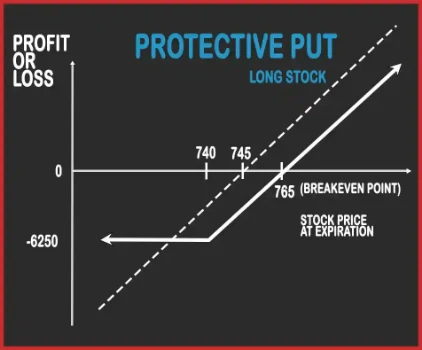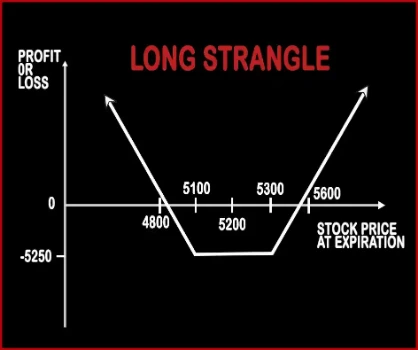Compare Strategies
| PROTECTIVE PUT | LONG STRANGLE | |
|---|---|---|

|

|
|
| About Strategy |
Protective Put Option StrategyProtective Put Strategy is a hedging strategy where trader guards himself from the downside risk. This strategy is adopted when a trader is long on the underlying asset but skeptical of the downside. He will buy one ATM Put Option to hedge his position. Now, if the underlying asset moves either up or down, the trader is in a safe position.
|
Long Strangle Option StrategyA Strangle is similar to Straddle. In Strangle, a trader will purchase one OTM Call Option and one OTM Put Option, of the same expiry date and the same underlying asset. This strategy will reduce the entry cost for trader and it is also cheaper than straddle. A trader will make profits, if the market moves sharply in either direction and gives extra-ordinary returns in the .. |
PROTECTIVE PUT Vs LONG STRANGLE - Details
| PROTECTIVE PUT | LONG STRANGLE | |
|---|---|---|
| Market View | Bullish | Neutral |
| Type (CE/PE) | PE (Put Option) | CE (Call Option) + PE (Put Option) |
| Number Of Positions | 1 | 2 |
| Strategy Level | Beginners | Beginners |
| Reward Profile | Unlimited | Unlimited |
| Risk Profile | Limited | Limited |
| Breakeven Point | Purchase Price of Underlying + Premium Paid | Lower Breakeven Point = Strike Price of Put - Net Premium, Upper Breakeven Point = Strike Price of Call + Net Premium |
PROTECTIVE PUT Vs LONG STRANGLE - When & How to use ?
| PROTECTIVE PUT | LONG STRANGLE | |
|---|---|---|
| Market View | Bullish | Neutral |
| When to use? | This strategy is adopted when a trader is long on the underlying asset but skeptical of the downside. | This strategy is used in special scenarios where you foresee a lot of volatility in the market due to election results, budget, policy change, annual result announcements etc. |
| Action | Buy 1 ATM Put | Buy OTM Call Option, Buy OTM Put Option |
| Breakeven Point | Purchase Price of Underlying + Premium Paid | Lower Breakeven Point = Strike Price of Put - Net Premium, Upper Breakeven Point = Strike Price of Call + Net Premium |
PROTECTIVE PUT Vs LONG STRANGLE - Risk & Reward
| PROTECTIVE PUT | LONG STRANGLE | |
|---|---|---|
| Maximum Profit Scenario | Price of Underlying - Purchase Price of Underlying - Premium Paid | Profit = Price of Underlying - Strike Price of Long Call - Net Premium Paid |
| Maximum Loss Scenario | Premium Paid + Purchase Price of Underlying - Put Strike + Commissions Paid | Max Loss = Net Premium Paid |
| Risk | Limited | Limited |
| Reward | Unlimited | Unlimited |
PROTECTIVE PUT Vs LONG STRANGLE - Strategy Pros & Cons
| PROTECTIVE PUT | LONG STRANGLE | |
|---|---|---|
| Similar Strategies | Long Call, Call Backspread | Long Straddle, Short Strangle |
| Disadvantage | • Value of protective put position decreases as time passes • Holding period of the protective put can be affected by the timing as a result tax rate on the profit or loss from the stock can be affected. | • Require significant price movement to book profit. • Traders can lose more money if the underlying asset stayed stagnant. |
| Advantages | • Unlimited potential profit due to indefinitely rise in the underlying stock price . • This strategy allows you to hold on to your stocks while insuring against losses. • Hedging strategy, trader can guard himself from the downside risk. | • Able to book profit, no matter if the underlying asset goes in either direction. • Limited loss to the debit paid. • If the underlying asset continues to move in one direction then you can book Unlimited profit . |